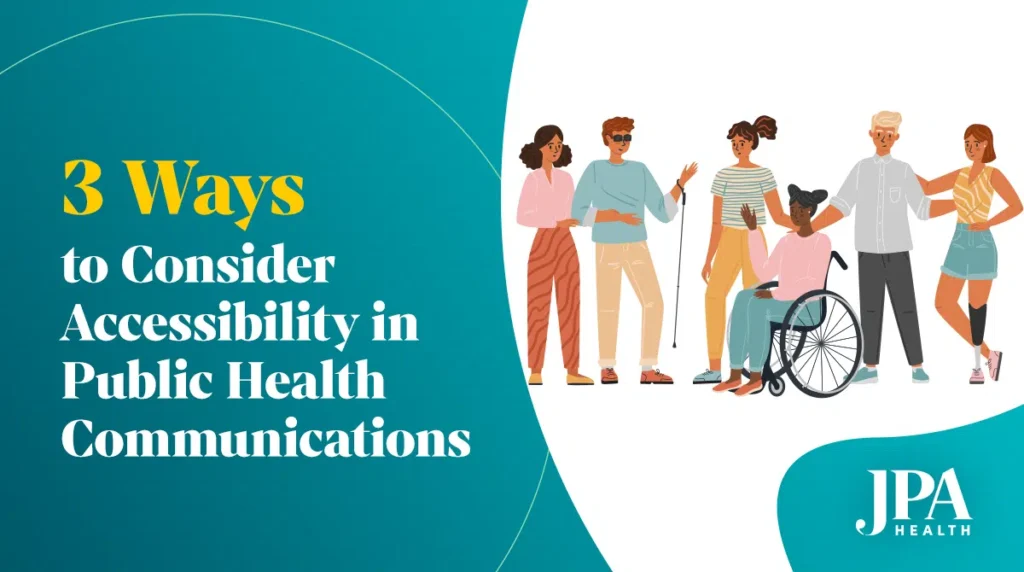
Access to accurate, understandable health information is an important part of ensuring equitable access and use of public health and healthcare services.
At JPA Health, we always consider this lens of accessibility in how we can make our health tools and resources that everyone needs to make informed decisions available for the communities our clients serve. We challenge ourselves to consider three critical topics in advancing accessibility through public health communications: reaching people where they are, with information they can understand, and in a way that acknowledges people’s cultural context.
Reaching People Where They Are
In public health, we develop a variety of resources and tools to reach our audiences. It is important not to assume that everyone receives their information in the same way. We should also ensure that we are using channels that do not leave people out and consider people’s lived experiences to engage as many people as possible. We should ask ourselves the following:
- Availability – does the communications activity require a time commitment or restraint (i.e., must be completed by a certain time of day)? Not everyone works similar hours and many people have limited availability.
- For example, if we want to understand working parents’ perspectives on child vaccinations, asking them to travel a long distance to participate in a two-hour focus group may not be accessible.
- Technology – does it require someone to have access to the internet or a particular device?
- For example, many people have access to a mobile phone but not a computer, so it is important to make websites and other digital resources mobile-friendly.
- Geographic Location – does it require someone to travel or live in a particular area?
- For example, if we are trying to reach people living in rural areas where there are food deserts, having advertisements in a grocery store may not be accessible.
Providing Information People Understand
Health literacy means how well an individual can find, understand, and use information and services to inform health-related decisions and actions for themselves and others. Historically, our healthcare system does not provide us with easy-to-understand information. So, as public health communicators, we must consider the following as we develop and publish information:
- Plain Language – Often, public health topics can be hard to understand. For example, announcing the findings of a new clinical research study often includes jargon and technical explanations. Using common language allows more people to benefit from the latest research.
- Reading Levels – According to The Literacy Project, 50% of Americans cannot read a book above a 5th grade reading level, which means any information written for the public should be written at, or below, that level.
- Mental Ability – When disseminating information, think about the level of mental ability required. For example, a timed online survey may not be accessible for someone with a cognitive disability such as ADHD.
Acknowledging People’s Cultural Context
Cultural and linguistic competency, or the ability to communicate effectively and interact with people from different cultures and languages, is essential to ensure that audiences connect with and understand our messaging. Consider the following:
- Language Preferences – If the audiences we seek to engage primarily speak Spanish or Italian, we should ensure that all messaging and materials are available in those languages.
- Core Cultural Values – In some cultures, respect for elders is highly valued, and many young people take care of their elders in multi-generational households. How could we create ways to engage young people to help support the health of the older adults in their lives?
- Existing Cultural, Religious or Other Beliefs – Some cultures have more hesitancy towards western medicine. How can we ensure we recognize naturalistic beliefs in relation to preventative health?
At JPA Health, we strive to approach our work with every client through a lens of accessibility so that every community can receive, understand, and use the information and resources they need to live healthier lives, and we will continue to grow and adapt as we learn more. Check out our Public Health Practice to learn more about our work.

